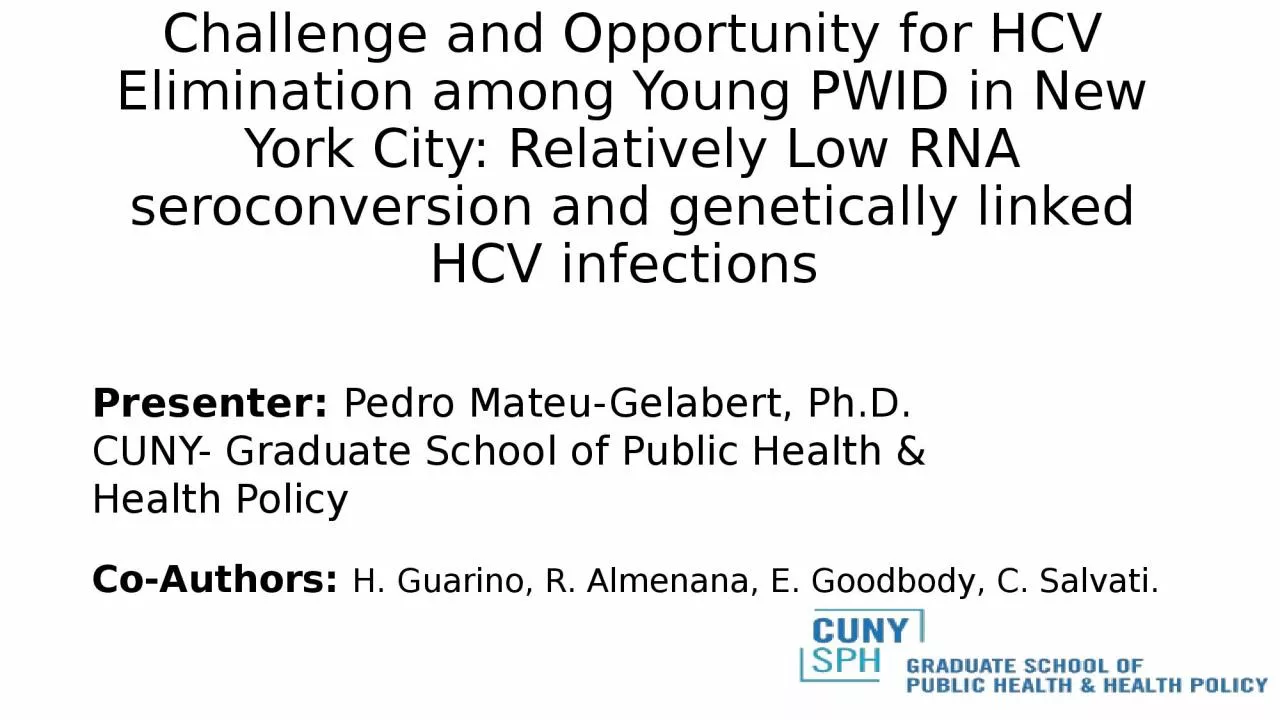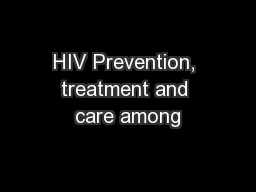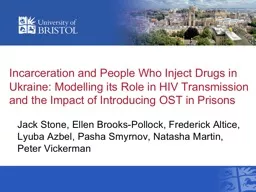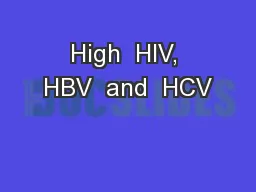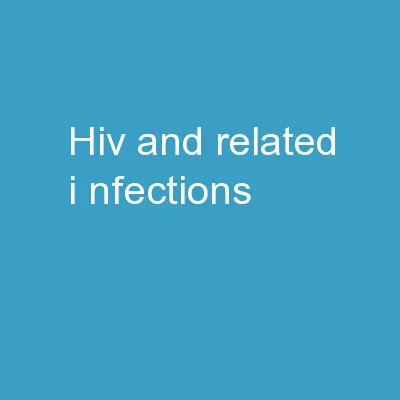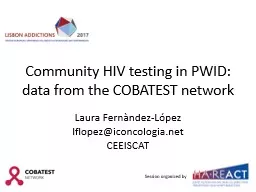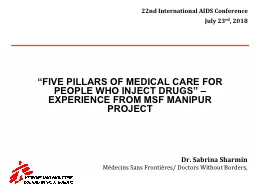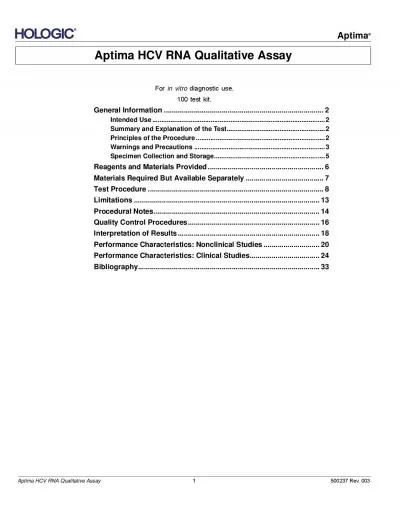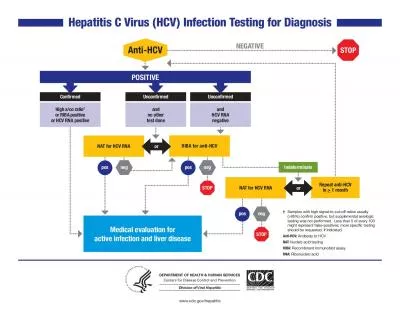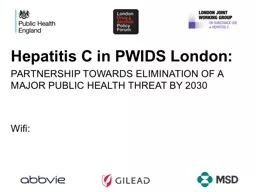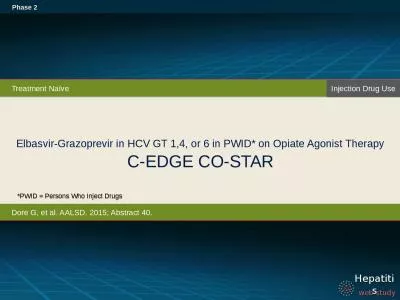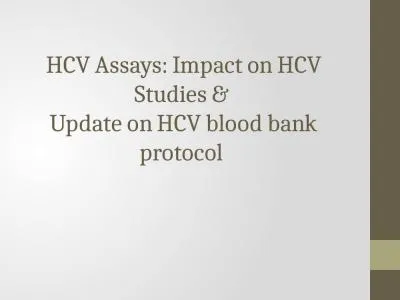PPT-Challenge and Opportunity for HCV Elimination among Young PWID in New York City: Relatively
Author : WannabeRockstar | Published Date : 2022-08-02
seroconversion and genetically linked HCV infections CoAuthors H Guarino R Almenana E Goodbody C Salvati Presenter Pedro MateuGelabert PhD CUNY
Presentation Embed Code
Download Presentation
Download Presentation The PPT/PDF document "Challenge and Opportunity for HCV Elimin..." is the property of its rightful owner. Permission is granted to download and print the materials on this website for personal, non-commercial use only, and to display it on your personal computer provided you do not modify the materials and that you retain all copyright notices contained in the materials. By downloading content from our website, you accept the terms of this agreement.
Challenge and Opportunity for HCV Elimination among Young PWID in New York City: Relatively: Transcript
Download Rules Of Document
"Challenge and Opportunity for HCV Elimination among Young PWID in New York City: Relatively"The content belongs to its owner. You may download and print it for personal use, without modification, and keep all copyright notices. By downloading, you agree to these terms.
Related Documents

